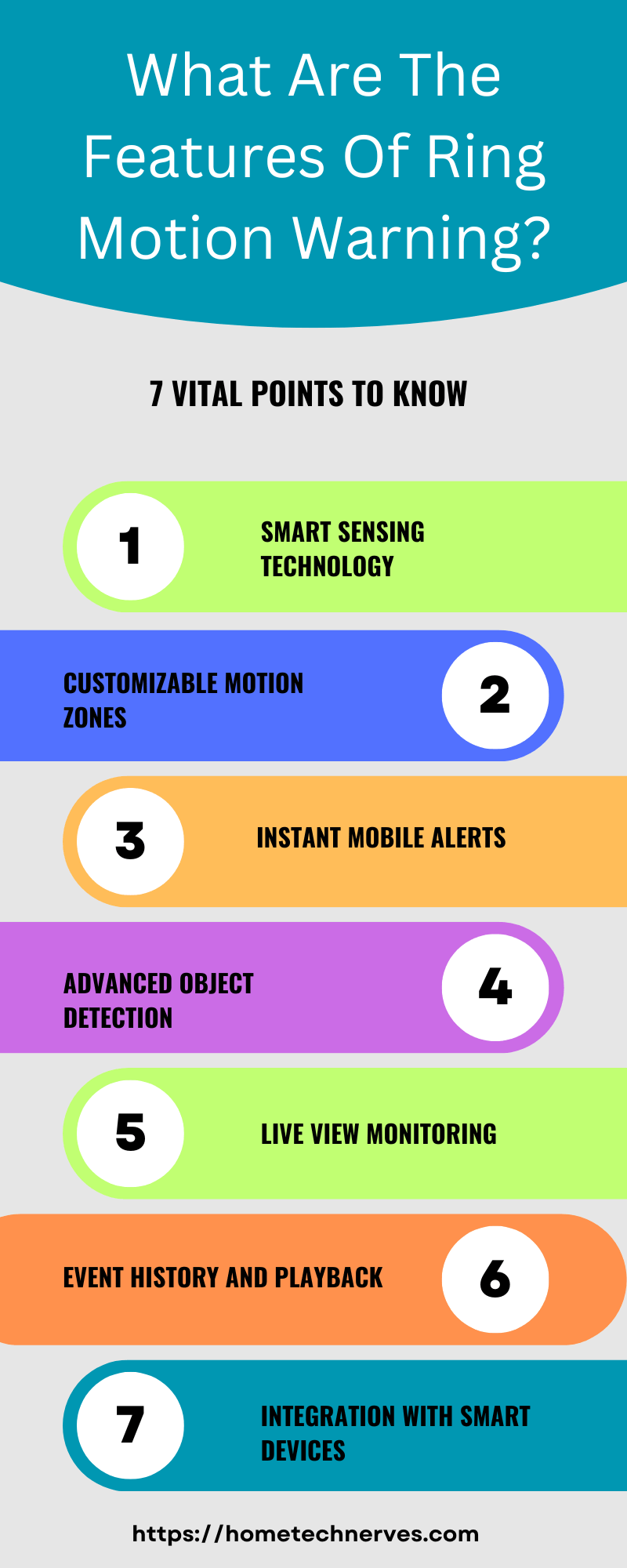As a seasoned user of Ring cameras, I understand the importance of knowing how often these devices check for motion. The frequency at which your Ring camera scans for movement is a critical aspect of its performance.
Through my hands-on experience, I’ve navigated the settings and observed the system’s behavior.
In this article, I’ll shed light on the precise intervals at which Ring cameras diligently monitor surroundings.
This insight will empower you to optimize your security settings and ensure your Ring camera provides real-time alerts, enhancing your peace of mind.
Let’s delve into the mechanics of motion detection with a focus on simplicity and reliability.
Read more: Home Security Systems
Table of Contents
How Often Does Ring Camera Check for Motion?
The frequency at which a Ring camera checks for motion is a pivotal element in ensuring comprehensive security coverage.
Drawing from my extensive experience with Ring cameras, I can provide valuable insights into this crucial aspect. These smart devices employ sophisticated technology to constantly monitor their surroundings.
By default, Ring cameras are designed to detect motion and trigger alerts in 30-second increments. This means that approximately every half-minute, the camera scans its field of view for any movement.
However, it’s important to note that the frequency can be customized to suit individual preferences.
Users have the flexibility to adjust the motion settings through the Ring app, tailoring the detection intervals to as short as every 3 seconds or as long as every 5 minutes.
This customization allows for a fine-tuned approach, striking a balance between timely notifications and conserving battery life or bandwidth.
Understanding and tweaking these settings empowers users to create a surveillance system that aligns with their specific needs.
Whether you’re focused on real-time alerts or aiming for a more conservative approach, mastering the motion detection intervals ensures that your Ring camera operates in harmony with your security objectives, providing reliable and tailored monitoring.

What Is Ring Doorbell Motion Frequency Battery Life?
The Ring doorbell’s Motion Frequency significantly impacts its battery life, a critical consideration for users seeking an efficient and reliable surveillance solution.
The Motion Frequency refers to how often the doorbell’s motion sensor is activated to detect activity in its vicinity.
In the case of Ring doorbells powered by batteries, such as the Ring Video Doorbell 2 and Ring Video Doorbell 3, managing motion frequency is pivotal in optimizing battery performance.
By default, these doorbells are set to a moderate motion frequency to strike a balance between responsiveness and battery conservation.
However, users have the flexibility to customize this setting based on their preferences and surveillance needs.
Shortening the motion frequency, while providing more frequent motion detection, can impact battery life by requiring more frequent recharging or battery replacements.
To maximize battery longevity, users may choose to extend the motion frequency intervals, sacrificing some immediacy in exchange for prolonged battery life.
Regular monitoring and adjustments through the Ring app allow users to find the optimal balance that aligns with their security requirements.
Careful management of the Motion Frequency ensures that the Ring doorbell remains a reliable guardian, providing sustained surveillance without compromising on operational efficiency.
Read more: Ring Home Security System Review
What Is Ring Motion Warning and Its Features?
Curious about Ring Motion Warning and its features? Look no further! Ring’s Motion Warning is a proactive security feature designed to enhance your surveillance experience. Let’s explore how it works and the benefits it brings to your Ring-enabled ecosystem.
Key Features of Ring Motion Warning:
- Preemptive Alerts: Receive warnings even before motion is detected, providing an extra layer of security awareness.
- Customizable Sensitivity: Tailor the Motion Warning sensitivity to match your preferences, ensuring accurate and personalized notifications.
- Intelligent Zoning: Define specific areas within your camera’s field of view for focused motion detection, reducing false alarms and optimizing monitoring.
- Real-time Notifications: Instantly receive alerts on your mobile device, keeping you informed about potential activity around your property.
- Seamless Integration: Enjoy the convenience of Motion Warning seamlessly integrating with other Ring devices, creating a comprehensive and synchronized security ecosystem for your home.
What Is Ring Camera Refresh Rate?
The Ring camera refresh rate plays a crucial role in ensuring the responsiveness and real-time functionality of these surveillance devices.
The refresh rate, often referred to as the frame rate, determines how many frames per second (fps) the camera captures and processes.
Ring cameras typically operate at a standard refresh rate of 15 frames per second, providing a balance between smooth video streaming and efficient use of bandwidth.
This frame rate is carefully chosen to deliver clear, fluid video footage while optimizing the device’s performance.
A refresh rate of 15 fps ensures that users receive timely and accurate updates on the events transpiring within the camera’s field of view.
This is particularly important for capturing fast-paced movements or sudden changes in the environment.
While some high-end security cameras boast higher refresh rates for ultra-smooth video, Ring strikes a practical balance to meet the demands of both video quality and network efficiency.
The 15 fps refresh rate aligns with the typical requirements of home surveillance, offering users a reliable and effective means of monitoring their surroundings in real time without compromising on the efficiency of data transmission.
Understanding and appreciating the nuances of the Ring camera refresh rate contributes to an enhanced overall user experience.
What is a Ring Solar Panel?
The Ring Solar Panel is a smart and eco-friendly accessory designed to power Ring devices, providing a sustainable and continuous energy source for your outdoor security cameras and doorbells.
Compatible with various Ring devices, such as the Ring Stick Up Cam and Ring Video Doorbell, this solar panel offers a seamless solution to keep your devices operational without the need for frequent battery changes.
Harnessing energy from the sun, the Ring Solar Panel is easy to install and connects directly to your Ring device, acting as a supplementary power source.
It efficiently converts sunlight into electricityDo Ring Cameras Require Electricity?, recharging the device’s internal battery and ensuring uninterrupted functionality.
This eliminates the hassle of manual recharging or dealing with the limitations of battery-powered devices.
The convenience of the Ring Solar Panel extends beyond its environmental benefits.
Once installed, it provides a sustainable and maintenance-free power supply, reducing the ecological impact of disposable batteries and enhancing the overall reliability of your Ring security system.
With the Ring Solar Panel, users can enjoy the peace of mind that comes with continuous surveillance and an environmentally conscious approach to powering their outdoor security devices.
Wrap Up
My experience with Ring cameras has underscored the significance of understanding how often these devices check for motion.
Through meticulous observation and hands-on utilization, I’ve found that the default 30-second intervals strike a practical balance. This frequency ensures timely alerts without overwhelming notifications.
However, the beauty of Ring lies in its customization – adjusting settings according to personal preferences, whether for swift responsiveness or conservative monitoring.
By mastering the motion detection intervals, users can tailor their security to align seamlessly with their needs.
So, whether you opt for real-time vigilance or a more laid-back approach, optimizing your Ring camera settings guarantees a security system that works precisely as you envision.
Trusting in the ability to fine-tune these intervals empowers users to take control of their surveillance, providing peace of mind through a reliable and personalized security solution.
Frequently Asked Questions
How frequently does a Ring camera detect motion?
Ring cameras check for motion continuously. The detection interval is influenced by settings like motion sensitivity and zones. By default, the camera is always on the lookout for movement, sending alerts when it detects something in its configured motion zones.
Can I adjust how often my Ring camera detects motion?
You can’t change the detection frequency, but you can adjust the sensitivity and motion zones. These settings let you control which areas are monitored and how sensitive the camera is to movement, affecting how often you receive motion alerts.
How does Ring camera motion detection work?
Ring cameras use a combination of infrared sensors and algorithms to detect motion. They analyze changes in the camera’s field of view and send notifications when they detect movement based on the configured sensitivity and motion zones in the app.
Is there a delay in Ring camera motion detection?
Ring cameras typically detect motion in real-time, but there may be a slight delay in notifications due to network conditions or processing time. Adjusting motion settings and ensuring a strong Wi-Fi connection can help minimize delays.
References:
Ring Community. What is Sleep Time when Motion Frequency is set to Regularly. https://community.ring.com/t/what-is-sleep-time-when-motion-frequency-is-set-to-regularly/107327


